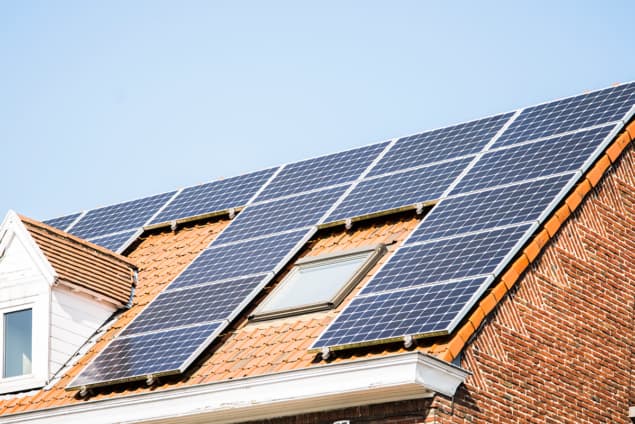
Most people can now, in theory, generate at least some of their own energy using solar cells. Some say that photovoltaic (PV) solar self-generation by “prosumers” represents an archetypical “destructive innovation”, challenging and changing market and industrial paradigms. In a seminal paper in the journal Energy Policy, Ruggero Schleicher-Tappeser said that PV allowed consumers of all sizes to produce power themselves: “new actors in the power market can begin operating with a new bottom-up control logic”. He added that the “increasing autonomy and flexibility of consumers challenges the top-down control logic of traditional power supply and pushes for a more decentralised and multi-layered system”.
That harks back to the radical agenda outlined by the late Hermann Scheer in his 2005 Solar Manifesto: “Since everybody can actively take part, even on an individual basis, a solar strategy is ‘open’ in terms of public involvement. It will become possible to undermine the traditional energy system with highly efficient small-technology systems, and to launch a rebellion with thousands of individual steps that will evolve into a revolution of millions of individual steps.”

100% renewable electricity is viable
He argued that large scale Desertec-type “supergrid” schemes, importing power long-distance from huge solar projects in North Africa, would “duplicate the current system” of centralized power and institutional control, whereby energy production and distribution is concentrated in the hands of a few multinational companies. In 2009 he told the Guardian that “we should be looking instead at decentralizing the system, and looking closer to home for our energy supplies, such as solar panels on homes or harnessing wind energy on the coasts, or inland”.
That is basically what happened in Germany. The proposed Desertec scheme was sidelined and most of the effort has gone into local- and national-level projects, with a lot of PV prosumers emerging, along with many community-based projects and green energy co-ops. Around 40% of Germany’s green power comes from them.
Small is beautiful
The small-scale decentralist position certainly has many merits. Technically, it can avoid long-distance transmission energy losses. Politically, it has become clear that locally controlled and owned projects are far more acceptable to local people than large projects imposed on them by corporate groups.
Nevertheless, not everyone is convinced that, technically, renewables can be developed sufficiently to meet all energy needs just on a small-scale local basis, using technologies like wind and PV. Solar may well be suited to local small-scale deployment but some of the other technologies are much more efficient on a large scale, for example wind turbines. If they are located on higher wind speed sites than are available to most urban/suburban communities, their energy output will benefit from the square law on blade size and the cube law on wind speed. Similar economies of scale apply to offshore wind, wave and tidal projects, most of which will be geographically remote from centres of population. What’s more, there is the issue of balancing power. It is harder to do that at the local level — you need a wider geographical spread.

Net zero UK: green energy tech to the rescue?
A 2015 Greenpeace scenario suggested that in theory, in most places up to 70% of energy could be generated and used on a local basis, with only perhaps 30% involving larger-scale systems and grid trading. However, the 70/30 ratio seems unlikely to be viable except in some areas. Renewable sources are not available to all to the same extent. A fully decentralised system, based on local prosumers and community-scaled projects, would need more (oversized) local capacity in order to maintain stable supplies than if you could rely on grid imports and longer-distance supergrids. So there could be a cost implication.
The debate continues to this day, with local storage adding a new dimension — in theory it should aid localization. Indra Overland, a member of the International Renewable Energy Agency’s research panel on the geopolitics of the energy transition, has said “for prosumers to get by without grids, radically improved energy storage technology would have to emerge”. However, that’s what is emerging with new cheaper batteries and there are certainly examples of attempts to go for local power backed up with storage, along with many inspiring community-led initiatives and plans, as I reported in an earlier post, even if most of these involve grid links and, increasingly, the development of local mini-grid-based trading.
Supergrids are back
At the other end of the scale, meanwhile, there has been a revival of supergrid ideas. For example, there have been proposals for supergrid projects in Asia, linking proposed concentrated solar power (CSP) Gobitec projects in Mongolia and the Gobi desert to energy demand centres in China, South Korea and even Japan. A variant of this idea, promoted by the Japanese Softbank Group and Japan’s Renewable Energy Institute, is the so-called Golden Ring. Wind energy generated in Mongolia would be transmitted to China and South Korea and, undersea, on to Japan along with hydro from Russia. Companies in each region have expressed interest, with the costs for transmission put at 10.5 cents/kWh or less — about the same as the cost of coal-fired power in Japan.
Going even further, a recent study looked at possible long-distance links between Asia and Europe — an electric “silk road”. Another study investigated a 4 GW link between North America and Europe, which it is claimed would be cost-effective. What’s more, China has reportedly been looking seriously at the idea of a global grid.
Long-distance power transfer is not as fanciful as it might seem. As a first step, many existing national grids can be linked up fairly easily without major new cabling. But for longer distances, full supergrids are needed. That’s where high-voltage direct current (HVDC) links come into their own. HVDC, and ultrahigh-voltage DC even more so, can have much lower losses, at 2-3%/1000 km compared to conventional HVAC grids at up to 10%/1000 km. These DC links allow power to be transmitted from places where it is currently available to where it is needed. That’s being done in China, with 30,000 km of 8 GW capacity UHVDC links, coupled with local HVAC links, already in place to connect the big demand centres in the south and east to the main green energy sources in the north and west. With the technology improving, we can expect more like that. New higher speed high-voltage AC/DC switchgear allows for easier local uploading and downloading of power and, combined with “smart” grid management systems, can improve system integration and efficiency. So smart supergrid networks could become even more suited to balancing variable renewables, regionally and possibly even globally.
However, there are some issues. While it is useful to be able to import green power when there is a local lull, and at other times to export surpluses, that depends on there being power available to import, or demand for exported power, at the right time and price. Some would say it will be safer and more secure from a national perspective to store any excess for later use locally.
Linking up the Americas
That issue has surfaced in a new study by Lappeenranta University of Technology in Finland and the University of São Paulo in Brazil, who looked at North and South America. It concludes that both can get to 100% renewables, as studies by Mark Jacobson et al and earlier Energy Watch Group/LUT studies have shown, and that area/regional grids can help with balancing and trade. However, it found that North–South links are harder, not just because the distances are too great – HVDC should be able to cope with that – but also since access paths south are constrained and major centres of population are not handily located.
The analysis of the Americas is complicated by the approach that has evolved in the US, where there are few inter-links between the main regional grid systems, which cover very large multi-state areas. The lack of long-distance integration is under challenge but in many US renewable energy studies “integration” still just means local regional grid upgrades. Perhaps unsurprisingly then, local storage is often favoured – it’s getting cheaper too.
That pattern shows up in this new study; local storage often looks easier. It’s further complicated by the fact that the US uses a lot of piped and/or tanked gas and oil. The new study looks at shipments by tanker of Brazilian synthetic natural gas (SNG), as liquefied natural gas (LNG), which may fit with the existing pattern better than long-distance power transmission – partly since it can be stored.
The paper’s one-line summary says, a little baldly: “Long-distance transmission lines cannot compete with energy storage technologies.” However, it is less keen on large focused solar CSP projects with molten salt heat storage, which is seen by Jacobson et al as a key part of their proposed US balancing system. The grid vs storage debate can clearly get quite complex and intense. So can the linked debate over large hydro — see my next post.



